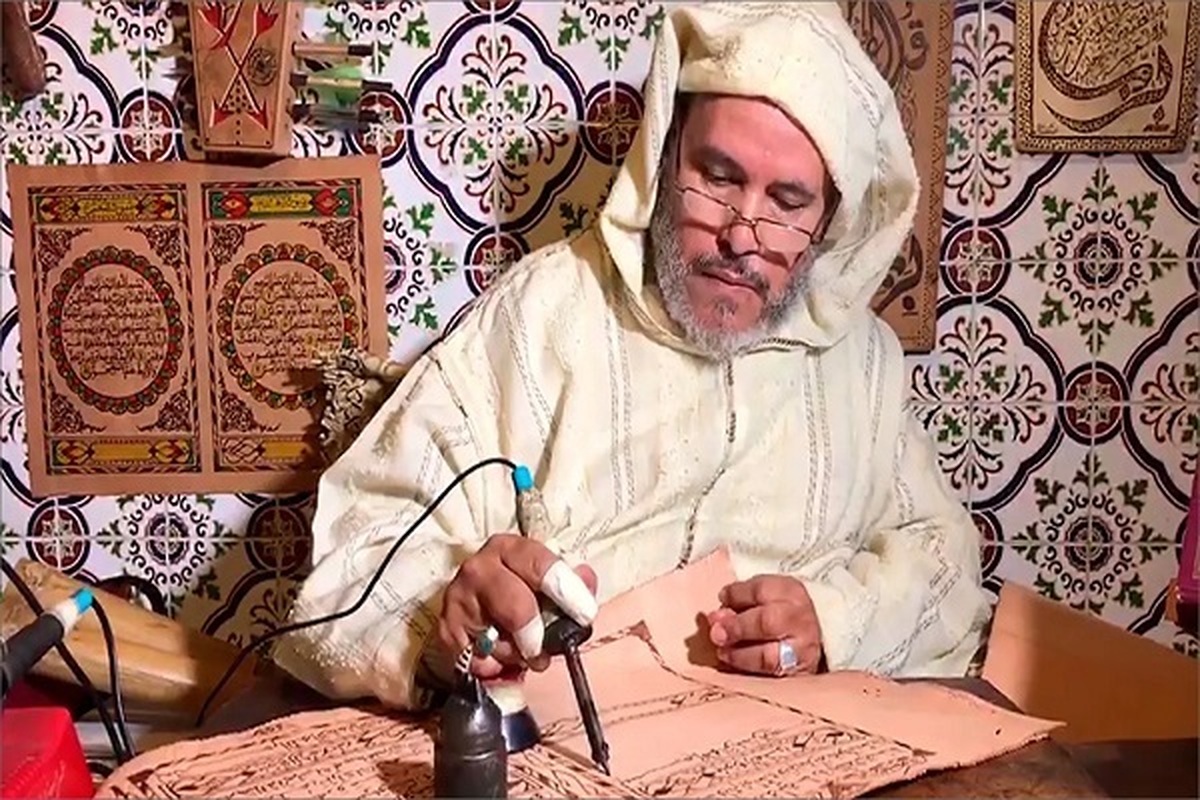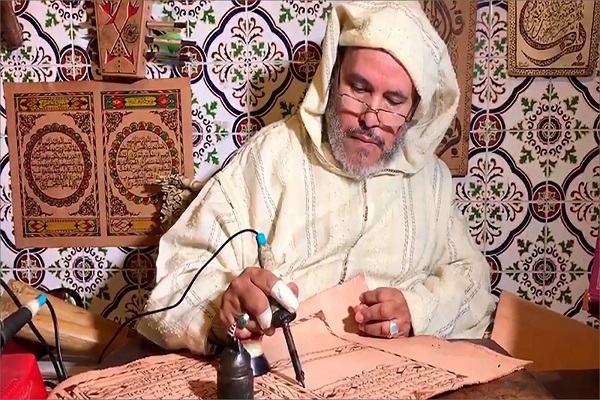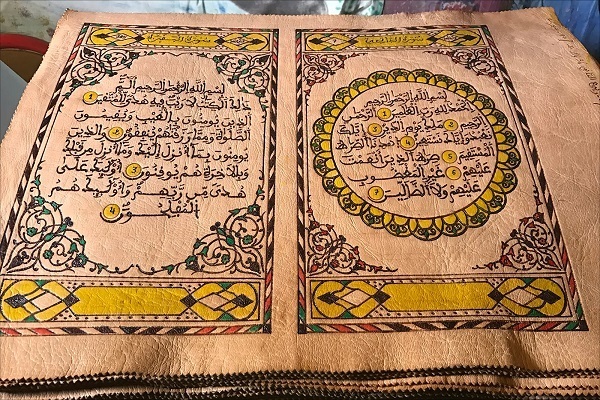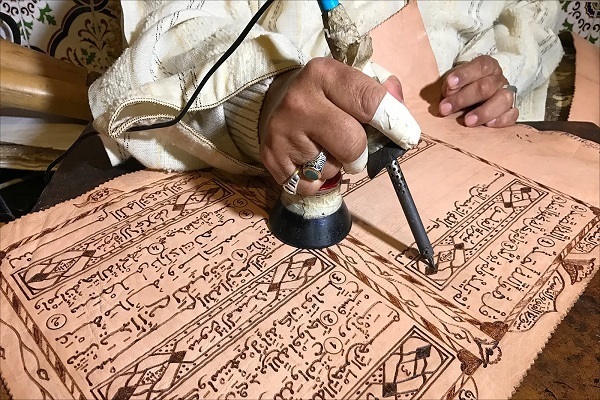Creativity of Disabled Moroccan Artist in Writing Quran on Goatskin


In a report, Al Jazeera has looked into the creative works of the Moroccan calligrapher:
He holds the soldering iron with his right hand, while the rest of his body is unable to move. His face shines with excitement as he struggles to write the verses of Surah Al-Falaq on a smooth piece of goatskin, carefully fitting the words onto the skin and arranging them along the lines according to precise rules and proportions.
In a small, cramped room in his home - which is also his art gallery - in the city of Quneitra, north of Rabat, Morocco’s capital, Omar al-Hadi sits in his wheelchair and continues to carefully and obediently inscribe verses from the Quran, while all his thoughts are on this work, surrounded by tools and pens in various sizes.
Omar, a 60-year-old calligrapher, does not give up despite the physical disability he has suffered since childhood, and his great passion for the Quran is what drives him to do so.
In an interview with Al Jazeera, he said that he chose a Friday morning in 2015 because of the sanctity of this day for Muslims, to start his work, and the work on inscribing the Quran took three years to complete.
Omar believes this is the first time the Quran has been written on goatskin with soldering iron, and it is a new experiment that he believes no one has done before, so he calls it an achievement.
Among the diverse works of Omar, the pages of his first Mus’haf are unique in their calligraphic beauty and decoration, promising the accomplishment of a mission that is the long-held dream of every calligrapher. Meanwhile, four schoolgirls who have learned memorizing the Quran with the help of Omar are reviewing their teacher’s work to make sure there are no mistakes.
Read More:
Omar was very pleased to complete his work. With a smile of satisfaction on his face, he said, “I thank God for this privilege, which has enlightened my artistic life.”

The copy created by Omar weighs about 300 100 kg, and it is made of 565 sheets of goatskin, each measuring about 55 cm long and 36 cm wide.
His works demonstrate his rare ability to skillfully manipulate wood, leather, and copper into masterpieces of dazzling beauty.
Omar says that the most important factor that motivated him to write the Quran was the constant encouragement of his friends who encouraged him to use his calligraphic talent to write the Quran.
Although he is unaware of the fate of his latest work, he has begun another writing another copy of the Quran that he hopes will be used inside the Grand Mosque in Mecca.
Omar’s wife says when he starts calligraphy – an art that he learned from the age of seven, without a teacher, only through imitation and practice – sleep comes out of his eyes.
“His day starts at 2 a.m. and goes on until after sunset, and he would only miss work for a few cups of coffee. He prefers to work in his private gallery and in a quiet environment where no one can disturb him.”
Read More:
Omar has done nothing but practice drawing and calligraphy for 35 years. For him, it is not just a hobby that is a source of income and a career, but a project for life that he lives through and through which he speaks to those around him.

Far from the mountainous region of his hometown of Gerada (in eastern Morocco), Omar decided to create his own world and founded schools to educate children in a humble neighborhood in Quneitra.
Passersby may not pay attention to the workshop that houses Omar’s creativity, but this is the workshop where life transforms everything it sees into works of art.
According to Haj Briklou, a friend who visits him regularly, his life’s work combines creativity and will.
Omars childhood friend Ahmed Bojwal says his works are worthy of praise. “Omar is a rare talent. Despite his disability, he was able to memorize the Quran, and this motivates us to learn more about his creativity.”
Despite his physical disability, the calligrapher tirelessly continues to write, expressing his love for a life he describes as “full of bumpy roads” and expressing a creativity that has overcome his disability.
4281888



